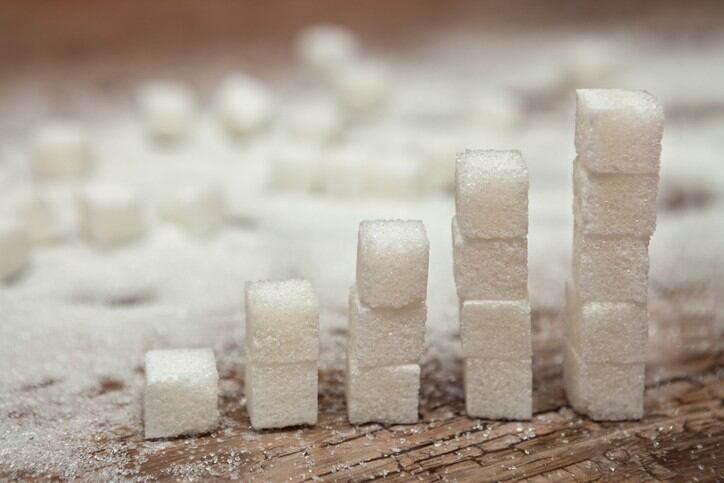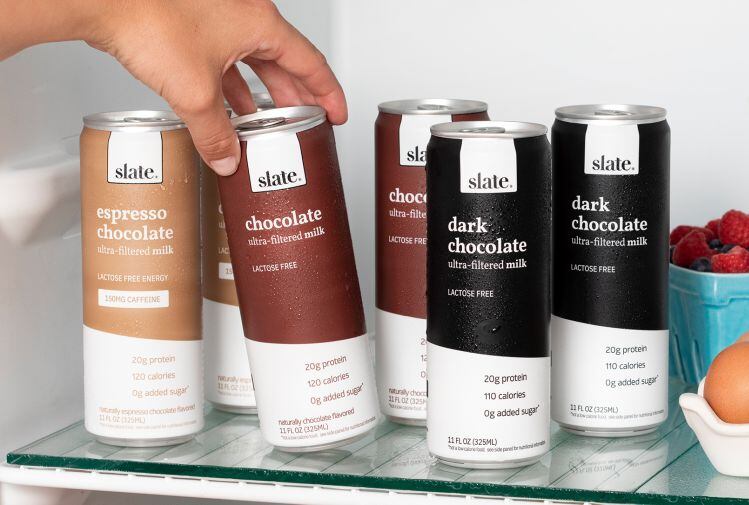The firm, which was founded in 2016 and has attracted investment from confectionery giant Hershey and sugar refining giant ASR Group, is on course to start producing tagatose in early 2022, followed by allulose, CEO Ed Rogers told FoodNavigator-USA: “We intend to invest this over the next three years, with most of it being in the next 12 months.”
Asked about the scale of the plant at Pantops, he said: “These terms… ‘pilot,’ ‘demo,’ ‘commercial’… mean different things to different people. This is a demo plant, but also can be described as a commercial-scale plant. This one is in-house, so we’re self-manufacturing, but future facilities will be a combination of self-manufacturing and collaborations.”
Tagatose: Exciting rare sugar... with a hefty price tag
Bonumose has developed a patented process for producing rare sugars that eliminates some processing steps and significantly increases yields. The process – developed by co-founder and CSO Dr. Daniel Wichelecki - can also utilize multiple ingredients as a feedstock (beyond commodity corn starch) such as by-products of plant-based protein production that have not been valorized.
The plan is to start with tagatose – a non-cariogenic, low-glycemic rare sugar with 92% of the sweetness of sucrose, but only 38% of the calories (it has 1.5cals/gram) – making it an attractive alternative to sugar as it has bulk and sugar-like sweetness, with fewer calories and a negligible impact on blood sugar, said Rogers.
Right now, tagatose still counts as sugar on the Nutrition Facts panel, but following the FDA’s recent request for comment on sugars that are not metabolized in the same way as traditional sugars, many industry stakeholders are hoping the agency will soon exclude it from the added and total sugars declaration on the Nutrition Facts panel (as it has already done with allulose).
Bonumose – which has submitted a citizen’s petition urging the FDA to classify tagatose as a dietary fiber – says there is also evidence that it serves as a prebiotic, inducing the production of the short chain fatty acid butyrate and stimulating the growth of beneficial bacteria in the large intestine.
Tagatose production process has ‘an extremely high yield, that’s fully-plant based and low cost’
Like allulose, tagatose is found naturally in a variety of foods but is produced on a commercial scale via a complex, multi-step process typically starting with lactose (milk sugar) that comes with a price tag putting it out of reach of many food manufacturers, claimed Rogers.
The lactose is hydrolyzed by lactase or acid hydrolysis to form glucose and galactose. The latter is then isomerized to tagatose either chemically or enzymatically and then isolated by a combination of filtration and ion exchange chromatography.
While new technology using yeast fermentation to produce tagatose is interesting, he said, the economics of this approach at a commercial scale are not yet clear.
Bonumose, however, has developed a production process “with an extremely high yield, that’s fully-plant based and low cost,” claimed Rogers in a recent interview.
“It starts with starch and then maltodextrin and we can go straight to tagatose. At a very large scale, we could probably make it even more efficiently than high fructose corn syrup.”
Allulose gaining traction following FDA decision to exclude it from added/total sugar labeling
Bonumose is also working on allulose, allose, and other low-glycemic, low-calorie, non-cariogenic rare sugars with similar properties to sucrose that could be alluring additions to the sugar reduction toolkit, were it not for their hefty price tag.
Allulose – which is found naturally in a variety of plants but is produced on a commercial scale via a complex, multi-step process typically starting with corn starch - is particularly attractive to formulators seeking to replicate the sensory and functional properties of sugar without the calories.
The tooth-friendly ingredient - which has 70% of the sweetness of sucrose but only 0.4 calories per gram (vs 4cals/g for sucrose) – has a negligible effect on blood sugar and insulin, and has garnered a lot of interest following the FDA’s decision to exclude it from the total and added sugars declarations on the Nutrition Facts panel.
As it has the texture and bulk of regular sugar, allulose can be used to reduce or replace sucrose in everything from beverages, yogurt and ice cream to baked products and candies, and now features in brands from Chobani Zero Sugar to Slate Chocolate Milk.
It also browns during baking (unlike erythritol), depresses the freezing point when making frozen products, and disperses well in batters and dough without the need for additional water.
Paving the way for mass market adoption of rare sugars
The problem is, while there are now several major players producing it commercially (click HERE) it’s still fairly costly, claimed Rogers.
Right now, he said, firms manufacturing allulose on a commercial scale deploy a multi-step process that takes them from corn starch to maltodextrin, to glucose, to fructose, which is then converted into allulose using enzymes, a “low-yield process with multiple separation and purification steps.”
Bonumose, he said, also starts with starch, but has enzymes that can convert the maltodextrin directly to allulose, with a very high yield, a potential game-changer in the market.
Bonumose process delivers higher yields
Most commercial producers today convert fructose to allulose using a single enzyme, explained Rogers. “However, the enzymatic reaction is a reversible reaction and converts less than 30% of the fructose to allulose. In contrast, Bonumose's process yields are much higher; we get around 90% allulose from maltodextrin because our patented process involves an irreversible enzymatic reaction.”
Fructose, meanwhile, is derived from glucose or sucrose, he added. “When derived from glucose, there is only 42% yield of fructose. When derived from sucrose, the fructose yield is about 50%. In both cases, the fructose must be purified out from the other sugars in the syrup.” In contrast, he said, Bonumose's process starts with maltodextrin, which is a less expensive and less processed raw material.
Hershey: ‘Focusing internal efforts and external investments to develop future breakthrough sugar reduction capabilities’
Hershey – which invested in Bonumose earlier this year via its C7 Ventures arm and is collaborating with the company to develop better for you products – is looking to expand its portfolio to deliver more reduced sugar options, through internal efforts and external investments, said chief development officer Kris Meulen.
“The new Bonumose facility represents a big next step in our commitment to providing consumers better-for-you confection that is both affordable and accessible.
“By bringing together the necessary expertise, capabilities, and resources all under one roof, scaling transformative uses of rare sugar alternatives will become a reality.”
D-allose, D-altrose, D-gulose, D-idose and D-talose
Bonumose, which is currently focused on allulose and tagatose, revealed in a comment to the FDA about rare sugar labeling that its novel technology also has the capability to produce rare sugars that are not yet commercially available, such as D-allose, D-altrose, D-gulose, D-idose and D-talose.
“The physiological effects of these sugars have not yet been evaluated in humans. Once they can be produced in sufficient quantity, proper safety testing will be required before considering their use in food. Nevertheless, we take this as an opportunity to introduce them to FDA in anticipation of potential future discussions.”




